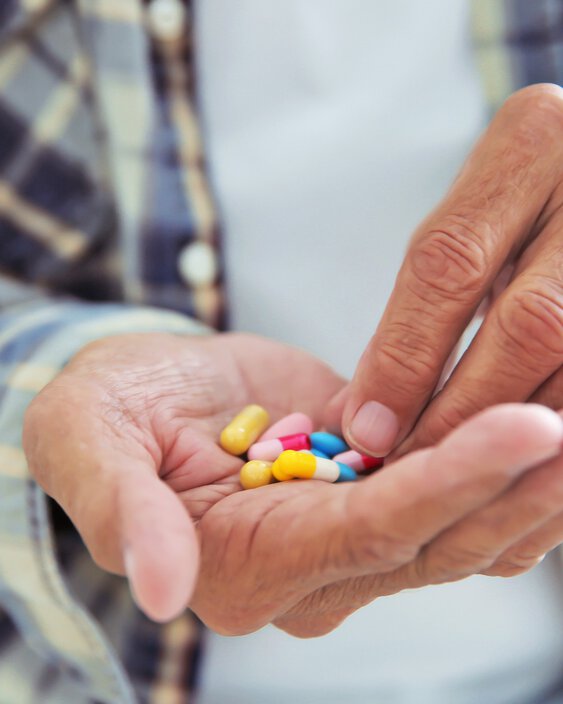
Psychoactive substances
Even though many psychoactive substances are classified, the transition from outlaw drug to mainstream medicine can change very quickly.
Loading ...
Psychoactive substances are agents that can cause changes in brain function. They can influence perception, thinking, consciousness, feeling and acting. In higher doses they can cause poisoning and sometimes have life-threatening effects and can even lead to death. They may be used for medical treatment, for recreation purposes and for ritual or spiritual occasions.
Psychoactive substances can be divided into different groups according to their pharmacological profile. An exact classification of individual substances into a specific category is often difficult, since the effects frequently overlap. There is no uniform classification system, but in general the substances can be classified as follows:
- Hallucinogens: Substances that cause strongly altered perception of reality
- Stimulants: Substances that have stimulating effects and may cause euphoria
- Depressants: Substances that may have sedating or anti-anxiety properties
- Analgesics: Substances used for anaesthesia and pain management
There are a variety of international and national initiatives to limit the availability and use of drugs, as well as to curb international drug trafficking. Three United Nations treaties together form the international law framework of the global drug control regime. They also establish the international framework for the prevention of drug abuse and drug trafficking:
- The Single Convention on Narcotic Drugs, 1961, as amended by the 1972 Protocol
- The Convention on Psychotropic Substances, 1971
- The Convention Against Illicit Traffic in Narcotic Drugs and Psychotropic Substances, 1988
Furthermore, all countries have passed additional laws to adapt the UN regulations to their own circumstances. Many specific laws and regulations have been adopted for the various psychoactive substances that have been at the centre of drug abuse for decades. Examples are the US "Controlled Substances Act", the German "Narcotics Law" and "New Psychoactive Substances Law" or the UK "Misuse of Drugs Act" and "Psychoactive Substances Act".
The most intensively discussed psychoactive substance in recent years is cannabis. The pharmacological effects of cannabis have become the focus of medical research. In medicine, cannabis is mainly used in pain and tumour therapy. There are further possible indications under discussion and in clinical trials. The medical use of cannabis is legal in a limited number of countries. This generally requires a prescription, and distribution is usually done within a framework defined by local laws.

The legality of cannabis for medical and recreational use varies by country. While recreational use is still prohibited in most countries, medical use is already legalised in several countries. The social and political discussion continues worldwide. Therefore, changes in the legal evaluation of cannabis for both medical and recreational purposes are to be expected in the future.
Even though many of the psychoactive substances, including cannabis, are classified under Schedule I of the UN Single Convention and are accordingly subject to all measures of control applicable to drugs under the convention, the cannabis example has shown that the transition from outlaw drug to mainstream medicine can change very quickly.
Today, there appears to be rapidly growing awareness, anticipation, and hope for the potential of several psychedelic drugs to become medically approved for various psychiatric disorders, including for example intractable depression, end-of-life anxiety, post-traumatic stress disorder (PTSD) and addiction. In the emerging discussion, side effects and complications are sometimes negated or glossed over. It is impossible to predict if current research in connection with psychoactive substances may present new true breakthroughs for medical therapies in the near future.However, from an insurance perspective it is important to keep an eye on these developments.
Expectations of a possible new market for psychoactive substances in medicine are high and parallels are drawn with developments in medical cannabis, where it is predicted that between USD 30 and 60 billion will be turned over by 2025.